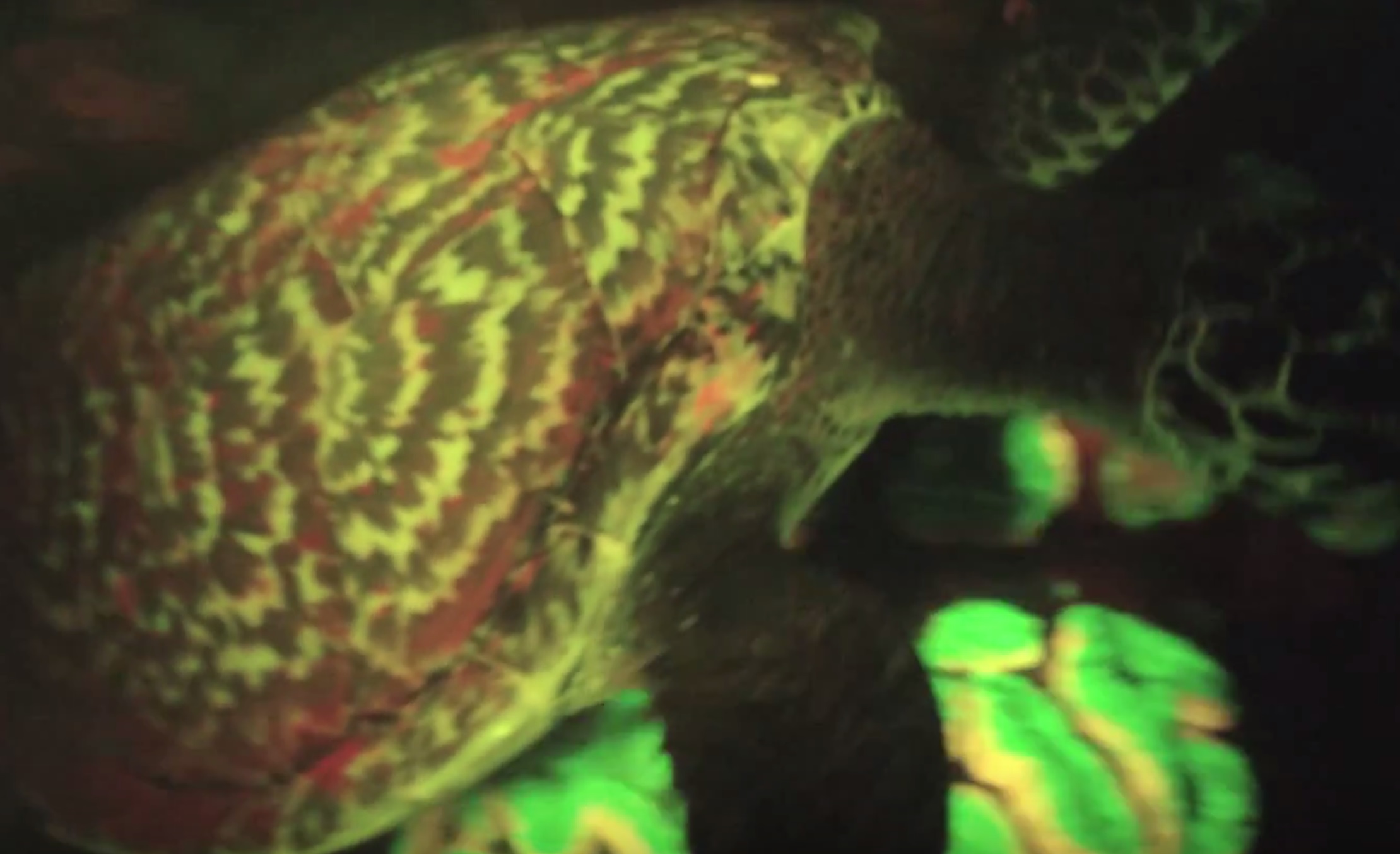Biologist and National Geographic explorer David Gruber with New York’s City University has discovered a “glowing” sea turtle that is believed to be the first reptile ever known to exhibit biofluorescence — the ability to absorb, transform and re-emit light as a different color.
The biofluorescent sea turtle — a hawksbill sea turtle, one of the rarest species on the planet — was spotted near Nugu Island on July 31 while Gruber and his team were continuing research in the Solomon Islands of the South Pacific. At the time of its initial appearance, the City University biologist was filming small sharks and coral reefs known to be bioluminescent when the “bright red-and-green spaceship” suddenly appeared beneath his camera.
A blue light matching the blue light of the surrounding waters was combined with a yellow filter on the camera to allow the scientists to detect fluorescing organisms in the waters around them. It was underneath this blue light that the extremely rare turtle was spotted glowing neon red and green as it passed beneath Gruber’s lens.
Alexander Gaos, director of the Eastern Pacific Hawksbill Initiative, told National Geographic‘s Jane Lee that he’s been studying turtles “for a long time” and he doesn’t “think anyone’s ever seen this before,” which is why it’s “really quite amazing.” Gaos was not involved in the find.
The discovery occurred during a night dive while the team was scouring the ocean for glowing sharks and coral reefs to film.
After following the glowing turtle for a short while, Gruber eventually decided to let it swim away because he “didn’t want to harass it.”
While the discovery — which was further confirmed through the examination of captive young hawksbills kept by a community located within close proximity to the initial spotting — has led to more questions that Gruber is excited to investigate, he notes that the study of this particular turtle will be “fairly difficult” as a result of their protected status and limited numbers.
It’d be fairly difficult to study this turtle because there are so few left and they’re so protected
Around the world, hawkbills have seen their population decline nearly 90 percent over recent decades, according to National Geographic.
























